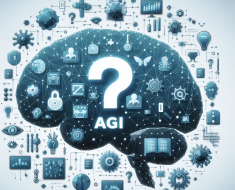Davos 2024
Ravin Jesuthasan
Every year, after the inspirational whirlwind that is the Annual Meeting of the World Economic Forum (WEF) at Davos, I sit down to reflect on the themes that emerged during the week. Last year, we discussed the radical reassessment of how we think about work and jobs — what we called “Work’s Great Reboot.”
This year, that rapid reboot has been thrown into overdrive by the tsunami that is generative AI (gen AI). It has stirred up excitement — and deep anxieties — as leaders try to understand and prepare for its impact on work, workers, and society at large. Surpassing climate change, geopolitical crises and last year’s hot topic — crypto — gen AI was the hottest topic at this year’s annual meeting by a factor of 10. And this was the topic of the 9th annual Mercer/Oliver Wyman Forum breakfast, Tapping AI’s Power to Optimize Our Working World, in Davos
Charting the rapid rise of gen AI
The Oliver Wyman Forum’s new report, How Generative AI is Transforming Business and Society, shows a staggering pace of adoption. In less than a year, 55% of people globally are using gen AI for their work. ChatGPT reached mass adoption in ten months, while the internet took 17 years, smartphones took 21 years, and electricity took 37 years.
This blazingly fast uptake is consistent across regions, industries, and roles — however, it does not inherently translate to productivity. In fact, only 61% of survey respondents report increased productivity from using gen AI.
The research also reveals a striking gap between the enthusiasm of CEOs, 69% of whom see broad benefits of gen AI, and the 59% of employees who worry it will take their jobs.
This is not entirely unwarranted, as research from the World Economic Forum shows that:
· 75% of surveyed companies expect to adopt AI.
· 50% expect AI to create job growth, and 25% expect it to create job losses.
· Employers expect 44% of workers’ skills will be disrupted within five years.
· Six in 10 workers will require training before 2027 — while only half have access to adequate training opportunities.
A humanistic view of automation is essential if we are to harness the benefits of AI in a sustainable and inclusive manner that reduces inequality. The WEF’s Good Work Framework is a good place to start as we redefine the human-machine compact.
Managing human-machine synergy
The integration of human and machine intelligence and the productivity gains that might result was a theme that resonated deeply with our panel at the aforementioned breakfast. Microsoft Americas CEO Deb Cupp talked about the transformative breakthroughs that have brought humans and gen AI closer, taking technology that was once the realm of experts and making it accessible to everyone.
“What I love is that a lot of people on the ground who are doing the job every day are the ones who are surfacing the best use cases,” said Deb. “So, although it’s great that executives want to do this, the true use cases are actually coming from the people who are doing the work.”
Tanuj Kapilashrami, the Chief HR Officer of Standard Chartered Bank, spoke to the potential of gen AI to “augment performance, productivity, and the work experience”. The fear of the unknown looms large, she said, but “as machines get better at being machines, humans can get better at being humans.”
The democratization of access
As many know, one of the primary benefits of gen AI is how it has democratized access to AI through the use of natural language as its primary interface. For Dan Vahdat, CEO of Huma Therapeutics, the rapid adoption of generative AI holds much promise. Underscoring the democratizing power of this technology, Dan made the case that gen AI is bridging socio-economic divides. “It’s a resource for all of us to use. And probably the best thing that has happened to the world since the internet.”
The double-edged sword that is gen AI
The inherent contradictions in gen AI were an important theme. Dan noted that Huma Therapeutics has identified a potential 10x time-savings for healthcare clinicians with gen AI — a staggering leap forward in productivity and efficiency in healthcare.
But Ana Kreacic, Chief Knowledge Officer at Oliver Wyman, observed that traditionally, such productivity savings have tended to benefit companies, not workers. “On the one hand, workers would love to have some free time. But on the other hand, when you look at history, many of the productivity gains that we’ve seen historically have gone purely to the employer.”
Reskilling and upskilling for gen AI
The rapid advance of gen AI is not just transforming how we work; it’s catalyzing the shift from job-centric to skill-centric models within an organization. When you get beyond the job to the component activities and tasks, you see clearly where certain activities might be substituted, others augmented, and yet other bodies of work transformed.
The adoption of gen AI calls for skills that are not always present. Ana noted: “40% of executives believe their workforce needs training or retraining. 98% of workers are saying, ‘We need more.’ The disconnect is huge, and companies need to do a lot more.”
The upcoming Mercer Global Talent Trends 2024 research underscores this, as only 45% of employees said they trust that their organization will teach them the skills they will need if their job changes due to AI and/or automation.
Organizations must start with skills, agreed Tanuj. “I do think it’s going to disrupt jobs, but the real opportunity that companies have is to stop thinking of the organization as a collection of jobs and think of it as a collection of skills. If we do pivot from job to skills, I think it can be a really exciting moment for workforces across the world.”
Rethinking and redesigning work for the gen AI age
The age of gen AI is already upon us, cautioned Azeem Azhar, CEO of Exponential View, and there is only a short period of time left before the technology no longer requires a human co-pilot. The panelists agreed that it is essential for companies to proactively redesign work to incorporate gen AI and not just leave employees to grapple with the change on their own. The quantum and pace of change requires organizations to design space for learning and well-being into the flow of work as opposed to expecting the workforce to singularly bear the burden of their continued relevance for a changing world of work.
Ensuring a future-ready workforce
As I noted at the conclusion of the panel, the rapid adoption we’ve seen in gen AI — just over the course of the last year — is only the tip of the iceberg. The WEF has already quantified some of the seismic changes it is bringing to jobs, with more than 75% of companies looking to adopt these technologies over the next five years.
It is going to be pivotal that we reinvent work models to bring our customers, employees and communities on this journey to ensure an equitable and inclusive future of work that appropriately balances economics and empathy. These are table stakes for competing in the era of gen AI, and if we can get this balance right, we can ensure a future-ready workforce that will thrive in the world of work that comes next.
Watch the event highlight video to see more from this important and timely conversation.
Follow me on Twitter or LinkedIn. Check out my website or some of my other work here.





